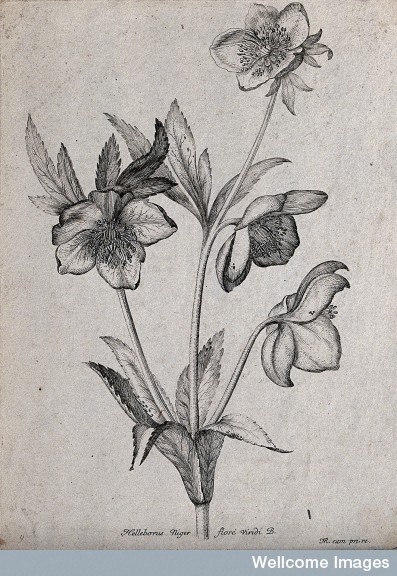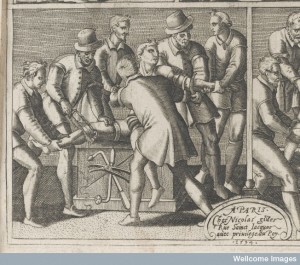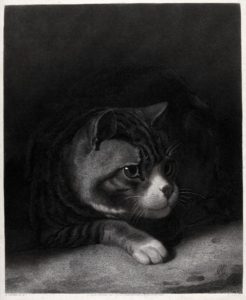

Credit: Wellcome Library, London.
While searching for inspiration for this year’s Christmas themed post (previously we have covered mince pies for example) I stumbled across the Christmas Rose, otherwise known as Hellebor Niger.
Israel Hiebner’s Mysterium Sigllorum, herbarum & lapidum informed readers that Black Hellebore was ‘commonly use[d] to blossom about Christmas‘ and was governed by Saturn. He claimed that worn about the neck it would bestow longevity.1
In addition to improving longevity, and like most plants of the early modern era the Christmas rose was believed to have a range of healing qualities. The Theatrum Botanicum explained that there were several variations of the plant. The leaves of which could be shred small and baked into small cakes that would help the dropsie, jaundice and other diseases originating in the liver or gall bladder.2
The 1659 printing of Leonardo Fioravanti’s An exact collection of the choicest and more rare experiments described how the root of the plant could be ‘dried and kept two years, may be safely used without other preparation, and may be ministred against any infirmitie that hath his originall of a melancholic cause’. It was therefore, he argued, useful for fevers, and ‘lunatick persons vexed with melancholie’.3
John Pechey’s very nearly contemporary Compleat herbal of physical plants agreed that it was a good plant for ‘Madness, [and] Hypochondraical Passion’ because it purged the body of melancholy. However, he attributed the Christmas Rose with further curative properties, stating that it was good for elephantiasis, herpes, cancer, giddiness, falling-sickness, apoplexy and the itch.4
There were those however who contested the Christmas Rose’s role in curing disorders of the mind. William Battie’s Treatise of Madness published in 1758 claimed that
As to black Hellebore, it is either not the drug which was recommended by the Antients and made Anticyra famous, or else it did not really deserve such recommendation. For after several trials I have not the least reason to think it of any service in Madness.5
Black hellebore was not a straightforward remedy though, Pechey cautioned his readers that it was a potentially dangerous medicine and that the dose should be moderated according to the person consuming it. He noted that ‘it ought to be given only to strong People’. Women and children were allowed to take a decoction in which the potency of the hellebore had been ameliorated with mastic, cinnamon, aniseed and fennel seeds.6
The Christmas rose eased disorders of the mind and on that note we will leave you to enjoy a peaceful and restful festive season. We will be back in the new year – if you would like to write a blog post in 2016 please do get in touch with us.
________________________
- Israel Hiebner, Mysterium Sigillorum, herbaum & lapidum (London, 1698), p. 71.
- John Parkinson, Theatrum Botanicum: the theatre of plants (London, 1640), p.215.
- Leonardo Fioravanti, An exact collection of the choicest and more rare experiments and secrets in physick and chyrurgery (London, 1659), p.64.
- John Pechey, The Compleat Herbal of Physical Plants (London, 1694), pp. 256-7.
- William Battie, A Treatise on Madness (London, 1758).
- John Pechey, The Compleat Herbal of Physical Plants (London, 1694), pp. 256-7.




One thought on “The Christmas Rose”
Comments are closed.